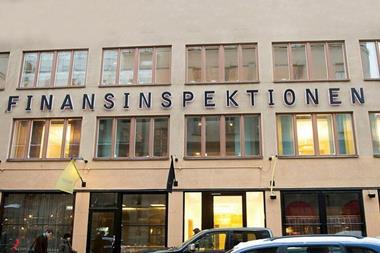With a population of 5.2m, Finland has one of Europe’s smaller real estate markets. The Helsinki region, comprising the capital city Helsinki and its 11 municipalities, houses 1.2m inhabitants, or almost 25% of Finland’s entire population. Helsinki’s central business district (CBD) is the most important sub-market in Finland both in terms of prime office location and retail dominance.
Across Finland, with the exception of the Helsinki region and other key urban areas, building density is low. Current planning policy is aimed at encouraging higher density, greater efficiency and sustainability in new developments. To this effect, some local authorities, for example Helsinki and Vantaa, own a high level of undeveloped land and are able to exert considerable influence regarding the supply of land within their jurisdiction.
As with most Nordic countries, there are few office markets of any significant size in Finland. The Helsinki region, is undoubtedly the largest and most important with a capacity of 7.6m2. The bulk of this stock is situated in either city centre or edge-of-town locations, although Helsinki does have an out-of-town market too. However, of all the property classes, the office market has suffered the most since the economic slow down in 2001.
Occupier demand for offices has fluctuated considerably over the past decade. Take-up in Helsinki reached a peak in 2001, however, demand for prime office space has remained subdued since then despite accelerated economic growth. It is widely accepted that the tide is turning and healthy levels of take-up are expected this year.
The highest rents are achieved in Helsinki, where prime office space is over 40% more expensive than in Espoo, the next most expensive location. Prime rents rose steadily in the second half of the 1990s, reaching a peak in 2000, since when they have come under downward pressure. Although average rents have decreased slightly, the prime rents in Helsinki’s CBD have remained stable at e310/m2.
The key investment players in the Finnish office market include pension insurance companies, pension funds and property companies. Offices have remained popular investment targets due to their relatively low risks and competitive yields – 2003, saw the office market offer a yield of 5.2%.
In terms of overall retail sales, the Finnish market is very small by European standards and the smallest of the Nordic countries. Correspondingly, there are relatively few retail outlets and retail trade is highly concentrated – shopping centres account for 22% of all retail sales. The main player in the shopping centre market is Citycon, Finland’s largest property investment company, which specialises in the retail sector and currently owns 16 shopping centres across Finland. Retail parks are a relatively new feature of the Finnish retail market, with the Danish developer, TK Development, being the most active player in this market to date.
Finnish planning policy aims to protect town centres and large-scale new development is restricted. Consequently, sustained demand and limited supply of retail space has meant that rents have become relatively expensive, although they are lower than in many other major western European cities. As retail space remains almost fully let, prime rents have stabilised to around e930/m2, having grown steadily during the mid-1990s and are expected to remain fairly flat this year. The retail sector has offered competitive returns in recent years and remains popular with overseas investors offering a yield of 7.5% in 2003.
Overall the Finnish investment market is small but has seen improved liquidity in recent years. The structure of the Finnish property investment market changed considerably after the recession of the early 1990s, when the banks’ former strong hold was substantially weakened.
At the end of 1995 the property investments of pension insurance companies stood at e2.9bn, by the end of 2003 this had risen to e7.5bn. It is now estimated that the major pension insurance companies’ real estate portfolios make up between eight-20% of their total investment portfolio.
During 2003, investment activity was relatively high mainly due to investors’ long-term confidence in the Finnish economy combined with an attractive yield. Domestic investors, such as the larger institutions, were net sellers. On the purchaser side, pension funds, listed property companies and foreign investors dominated the market. Indeed, during 2004, international investors have so far accounted for around 50% of the value of all major transactions, with the majority of investor activity focused on the Helsinki area with offices, followed by retail, dominating. Prior to 2002 there were no significant foreign investors in the Finnish property market.
Some recent major international property transactions have included the sale of Polar Real Estate to the German property company IVG for e450m, the sale of Ilmarinen´s retail portfolio to Doughty Hanson for e350m and the sale of Nordea Bank’s three individual portfolios to three different foreign investors totalling more than e1bn. The most active foreign investors into Finnish property to date have been from Great Britain, France, USA, Germany, The Netherlands, Israel and Denmark.
Arno Jaulas is a partner at DTZ in Finland
Answering a taxing question
The Finnish property market has been asking for a tax transparent investment vehicle for several years and in 1997 legislation was passed making it possible to establish property funds. However, to date, no funds have been set up and this is largely down to taxation reasons. At present the legislation does not allow the funds to be tax neutral, both the fund and shareholder are taxable on earnings. Therefore it makes more sense currently to own the property directly, thus avoiding the double taxation.
The discussion concerning the most efficient way to use property funds to channel investment into the Finnish property market, has long been debated. From international experiences the most efficient property fund model appears to involve the use of a limited company, whereby the fund is exempt from tax, provided certain prerequisites are fulfilled.
The key players in the Finnish market want to create a system which would enable funds to publicly list, if appropriate. This would bring with it a degree of transparency and flexibility, the fund would be obliged to distribute most of its earnings as dividends and the whole process would be under close scrutiny from the financial authorities. A system with no stringent restraints on the employment of borrowed capital would also be popular.
The ministry of finance set up a working group to look at these issues in November 2003. The Group has looked at the structure and taxation of property fund models in use abroad. It is due to issue its interim report shortly, with the final report expected in May 2005 – however preliminary findings show that the main issues of structure and taxation remain largely unresolved.












No comments yet